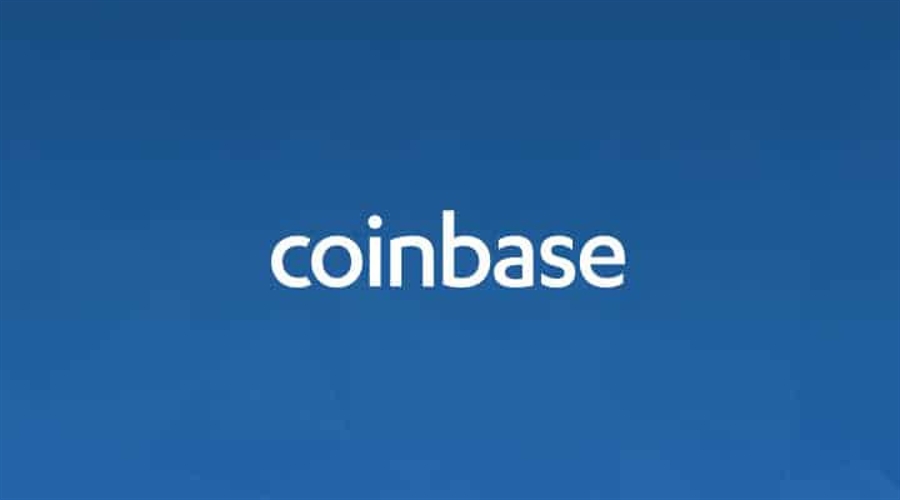
Coinbase, a
renowned digital asset company, recently made headlines with the launch of its
Layer-2 network. This revolutionary development has the potential to transform
the user experience and the efficiency of platform transactions.
Understanding
the Fundamentals
Layer-2
solutions are protocols that are implemented on top of current blockchain
networks in order to improve scalability and reduce transaction fees. The
Layer-2 network is a strategic initiative by Coinbase to overcome the issues
connected with the scalability of the Ethereum blockchain, on which Coinbase
largely works.
In essence, the
Layer-2 network serves as an overlay, allowing for faster and less expensive
transactions by processing them outside of the main Ethereum blockchain. This
is accomplished by establishing a secondary layer that processes the majority
of transactions, only occasionally settling on the principal network. As a
result, users benefit from a more simplified and cost-effective approach.
User
Advantages
Coinbase users
stand to benefit greatly from the Layer-2 network’s implementation. The
reduction in transaction fees is one of the key benefits. Due to network
congestion, traditional blockchain transactions frequently incur significant
costs. Layer-2 transactions take place off-chain, reducing congestion and, as a
result, fees. This is a nice relief for those who have been frustrated
by the unpredictability of transaction costs during peak periods.
Furthermore,
the Layer-2 network improves transaction speed. Users receive
near-instantaneous confirmation of their transactions because transactions are
handled off-chain and are periodically settled on the main blockchain. This
solves a common source of irritation in the bitcoin community: delays in
transaction confirmations.
Improving
the DeFi Experience
Coinbase’s
Layer-2 network is especially significant in the context of decentralized
finance (DeFi). DeFi applications that use blockchain networks sometimes suffer
issues such as high transaction fees and poor confirmation times. The Layer-2
solution prepares the Coinbase platform for a more seamless and user-friendly
DeFi experience.
Users who
engage in decentralized exchanges, lending, and other DeFi activities will
profit from the Layer-2 network’s efficiency and cost-effectiveness. This not
only improves DeFi’s overall appeal, but also corresponds with the broader
industry trend of making decentralized financial services more accessible to a
wider audience.
Managing
Potential Obstacles
While the
Layer-2 network has many advantages, it is critical to be aware of potential
issues and concerns. Interoperability with other Layer-2 solutions is an
important factor. Because the bitcoin ecosystem is diverse, with numerous
Layer-2 solutions available, enabling seamless communication and compatibility
between multiple networks is critical for wider adoption.
Furthermore,
the security of off-chain transactions requires close scrutiny. While Layer-2
solutions apply strong security measures, the decentralized nature of
blockchain necessitates constant monitoring. Coinbase, as an industry leader,
must continue a proactive approach to security, guaranteeing users that their
money will be protected even under this new operational paradigm.
Layer-2’s
Future and Coinbase’s Role
The use of
Layer-2 technology represents a big step forward in Coinbase’s progress as a
bitcoin platform. It not only demonstrates the company’s dedication to improve
the user experience, but it also places Coinbase at the forefront of
technological innovation in the industry.
Looking ahead,
the Layer-2 network lays the groundwork for future developments. Additional
capabilities and upgrades are anticipated to be provided as the technology
grows, reinforcing Layer-2’s role as an essential component of the
cryptocurrency infrastructure. Coinbase, with its large user base and industry
clout, is well positioned to drive and shape the future of Layer-2
technologies.
Coinbase
Leads the Way: Transparency and Trust in the Crypto Industry
In the
ever-evolving landscape of cryptocurrencies, transparency and trust have become
paramount, both for established players and up-and-coming projects. Recently,
Coinbase made a significant move that demonstrates their commitment to these
principles. Coinbase’s Base Layer 2 network has gone open-source, marking a
pivotal step towards transparency and community collaboration.
By
open-sourcing its code repositories, Coinbase’s Base Layer 2 network invites
developers from all corners to examine, contribute, and enhance the project.
This move streamlines development tasks, fosters collaboration, and brings the
crypto community closer to the heart of the technology. Developers now have
access to Base’s core code, simplifying various tasks, including contract
management and deployments.
The decision to
open-source aligns with Coinbase’s vision of a decentralized and inclusive
technology platform. It’s not merely a one-off gesture but part of their
broader support for open-source initiatives, emphasizing a commitment to a
crypto ecosystem built on trust.
Coinbase’s
open-source approach introduces a multitude of advantages. It brings
transparency to on-chain activities and accelerates community-led audits. With
public access to smart contract repositories, the crypto community can
scrutinize code for vulnerabilities, enabling quicker fixes. Additionally,
Coinbase has launched a bounty program through Coinbase HackerOne, offering
rewards of up to $1 million for identifying codebase vulnerabilities, creating
strong incentives for security and trust.
Conclusion
Finally,
Coinbase’s Layer-2 network emerges as a game changer in the cryptocurrency
sector, promising improved user experience, lower transaction costs, and faster
transaction confirmations. The Layer-2 network not only tackles current issues,
but it also lays the groundwork for a more efficient and accessible
cryptocurrency economy, notably in the field of decentralized finance. As this
innovation unfolds, users and industry observers alike must keep an eye on its
progress and consequences for the broader landscape of digital assets.
Coinbase, a
renowned digital asset company, recently made headlines with the launch of its
Layer-2 network. This revolutionary development has the potential to transform
the user experience and the efficiency of platform transactions.
Understanding
the Fundamentals
Layer-2
solutions are protocols that are implemented on top of current blockchain
networks in order to improve scalability and reduce transaction fees. The
Layer-2 network is a strategic initiative by Coinbase to overcome the issues
connected with the scalability of the Ethereum blockchain, on which Coinbase
largely works.
In essence, the
Layer-2 network serves as an overlay, allowing for faster and less expensive
transactions by processing them outside of the main Ethereum blockchain. This
is accomplished by establishing a secondary layer that processes the majority
of transactions, only occasionally settling on the principal network. As a
result, users benefit from a more simplified and cost-effective approach.
User
Advantages
Coinbase users
stand to benefit greatly from the Layer-2 network’s implementation. The
reduction in transaction fees is one of the key benefits. Due to network
congestion, traditional blockchain transactions frequently incur significant
costs. Layer-2 transactions take place off-chain, reducing congestion and, as a
result, fees. This is a nice relief for those who have been frustrated
by the unpredictability of transaction costs during peak periods.
Furthermore,
the Layer-2 network improves transaction speed. Users receive
near-instantaneous confirmation of their transactions because transactions are
handled off-chain and are periodically settled on the main blockchain. This
solves a common source of irritation in the bitcoin community: delays in
transaction confirmations.
Improving
the DeFi Experience
Coinbase’s
Layer-2 network is especially significant in the context of decentralized
finance (DeFi). DeFi applications that use blockchain networks sometimes suffer
issues such as high transaction fees and poor confirmation times. The Layer-2
solution prepares the Coinbase platform for a more seamless and user-friendly
DeFi experience.
Users who
engage in decentralized exchanges, lending, and other DeFi activities will
profit from the Layer-2 network’s efficiency and cost-effectiveness. This not
only improves DeFi’s overall appeal, but also corresponds with the broader
industry trend of making decentralized financial services more accessible to a
wider audience.
Managing
Potential Obstacles
While the
Layer-2 network has many advantages, it is critical to be aware of potential
issues and concerns. Interoperability with other Layer-2 solutions is an
important factor. Because the bitcoin ecosystem is diverse, with numerous
Layer-2 solutions available, enabling seamless communication and compatibility
between multiple networks is critical for wider adoption.
Furthermore,
the security of off-chain transactions requires close scrutiny. While Layer-2
solutions apply strong security measures, the decentralized nature of
blockchain necessitates constant monitoring. Coinbase, as an industry leader,
must continue a proactive approach to security, guaranteeing users that their
money will be protected even under this new operational paradigm.
Layer-2’s
Future and Coinbase’s Role
The use of
Layer-2 technology represents a big step forward in Coinbase’s progress as a
bitcoin platform. It not only demonstrates the company’s dedication to improve
the user experience, but it also places Coinbase at the forefront of
technological innovation in the industry.
Looking ahead,
the Layer-2 network lays the groundwork for future developments. Additional
capabilities and upgrades are anticipated to be provided as the technology
grows, reinforcing Layer-2’s role as an essential component of the
cryptocurrency infrastructure. Coinbase, with its large user base and industry
clout, is well positioned to drive and shape the future of Layer-2
technologies.
Coinbase
Leads the Way: Transparency and Trust in the Crypto Industry
In the
ever-evolving landscape of cryptocurrencies, transparency and trust have become
paramount, both for established players and up-and-coming projects. Recently,
Coinbase made a significant move that demonstrates their commitment to these
principles. Coinbase’s Base Layer 2 network has gone open-source, marking a
pivotal step towards transparency and community collaboration.
By
open-sourcing its code repositories, Coinbase’s Base Layer 2 network invites
developers from all corners to examine, contribute, and enhance the project.
This move streamlines development tasks, fosters collaboration, and brings the
crypto community closer to the heart of the technology. Developers now have
access to Base’s core code, simplifying various tasks, including contract
management and deployments.
The decision to
open-source aligns with Coinbase’s vision of a decentralized and inclusive
technology platform. It’s not merely a one-off gesture but part of their
broader support for open-source initiatives, emphasizing a commitment to a
crypto ecosystem built on trust.
Coinbase’s
open-source approach introduces a multitude of advantages. It brings
transparency to on-chain activities and accelerates community-led audits. With
public access to smart contract repositories, the crypto community can
scrutinize code for vulnerabilities, enabling quicker fixes. Additionally,
Coinbase has launched a bounty program through Coinbase HackerOne, offering
rewards of up to $1 million for identifying codebase vulnerabilities, creating
strong incentives for security and trust.
Conclusion
Finally,
Coinbase’s Layer-2 network emerges as a game changer in the cryptocurrency
sector, promising improved user experience, lower transaction costs, and faster
transaction confirmations. The Layer-2 network not only tackles current issues,
but it also lays the groundwork for a more efficient and accessible
cryptocurrency economy, notably in the field of decentralized finance. As this
innovation unfolds, users and industry observers alike must keep an eye on its
progress and consequences for the broader landscape of digital assets.
- SEO Powered Content & PR Distribution. Get Amplified Today.
- PlatoData.Network Vertical Generative Ai. Empower Yourself. Access Here.
- PlatoAiStream. Web3 Intelligence. Knowledge Amplified. Access Here.
- PlatoESG. Carbon, CleanTech, Energy, Environment, Solar, Waste Management. Access Here.
- PlatoHealth. Biotech and Clinical Trials Intelligence. Access Here.
- Source: https://www.financemagnates.com//cryptocurrency/everything-you-need-to-know-about-coinbases-layer-2-network/
- :has
- :is
- :not
- $1 million
- $UP
- 150
- a
- About
- accelerates
- access
- accessible
- accomplished
- activities
- Additional
- Additionally
- Adoption
- advantages
- ahead
- Aligns
- alike
- All
- Allowing
- also
- an
- and
- Anticipated
- appeal
- applications
- Apply
- approach
- ARE
- AS
- asset
- Assets
- At
- audience
- audits
- available
- aware
- banner
- base
- BE
- because
- become
- been
- benefit
- benefits
- between
- Big
- Bitcoin
- Bitcoin Community
- blockchain
- Blockchain networks
- blockchain transactions
- Bloomberg
- both
- bounty
- bounty program
- Brings
- broader
- built
- but
- by
- CAN
- capabilities
- Changer
- Close
- closer
- code
- Codebase
- coinbase
- Coinbase’s
- collaboration
- commitment
- Common
- Communication
- community
- community-led
- company
- compatibility
- component
- Concerns
- confirmation
- confirmation times
- confirmations
- congestion
- connected
- Consequences
- constant
- context
- continue
- contract
- contribute
- Core
- corners
- corresponds
- cost-effective
- Costs
- Creating
- critical
- crypto
- crypto community
- Crypto ecosystem
- cryptocurrencies
- cryptocurrency
- Current
- decentralized
- Decentralized Finance
- decentralized-exchanges
- decision
- dedication
- DeFi
- DeFi activities
- delays
- demonstrates
- deployments
- developers
- Development
- developments
- digital
- Digital Asset
- Digital Assets
- diverse
- drive
- due
- during
- economy
- ecosystem
- efficiency
- efficient
- emerges
- emphasizing
- enabling
- engage
- enhance
- especially
- essence
- essential
- established
- establishing
- ethereum
- Ethereum blockchain
- Even
- everything
- examine
- Exchanges
- expensive
- experience
- eye
- factor
- faster
- Fees
- field
- finance
- financial
- financial services
- For
- forefront
- Forward
- fosters
- frequently
- from
- future
- future developments
- game
- game-changer
- gesture
- gone
- greatly
- groundwork
- Grows
- Have
- Headlines
- Heart
- High
- HTTPS
- identifying
- implementation
- implemented
- important
- improve
- improved
- improves
- in
- Incentives
- Including
- Inclusive
- industry
- industry Leader
- Infrastructure
- Initiative
- initiatives
- Innovation
- Interoperability
- Introduces
- invites
- issues
- IT
- ITS
- jpg
- Keep
- Key
- Know
- landscape
- large
- largely
- launch
- launched
- layer
- Layer 2
- Lays
- leader
- Leads
- lending
- less
- lower
- made
- Main
- Majority
- Making
- management
- many
- marking
- measures
- merely
- million
- money
- monitoring
- more
- more efficient
- move
- multiple
- multitude
- must
- Nature
- Need
- network
- networks
- New
- nice
- notably
- now
- numerous
- observers
- of
- offering
- on
- On-Chain
- ONE
- only
- open source
- operational
- order
- Other
- outside
- overall
- Overcome
- paradigm
- Paramount
- part
- Peak
- pivotal
- Place
- Places
- platform
- plato
- Plato Data Intelligence
- PlatoData
- players
- poor
- positioned
- potential
- Prepares
- Principal
- principles
- Proactive
- processes
- processing
- Profit
- Program
- Progress
- project
- projects
- promising
- protected
- protocols
- provided
- public
- quicker
- receive
- recently
- reduce
- reducing
- reduction
- relief
- Renowned
- represents
- requires
- result
- revolutionary
- Rewards
- Role
- s
- Scalability
- scrutiny
- seamless
- secondary
- sector
- security
- Security Measures
- serves
- Services
- Settled
- settling
- Shape
- significant
- simplified
- simplifying
- smart
- smart contract
- solution
- Solutions
- Solves
- sometimes
- Source
- speed
- stand
- Step
- Strategic
- strong
- such
- support
- Tackles
- Take
- tasks
- technological
- Technologies
- Technology
- that
- The
- The Coinbase
- The Future
- their
- Them
- These
- this
- those
- Through
- times
- to
- top
- towards
- traditional
- transaction
- transaction costs
- Transaction Fees
- transaction speed
- Transactions
- Transform
- Transparency
- Trend
- Trust
- under
- upgrades
- use
- User
- User Experience
- user-friendly
- users
- various
- vision
- Vulnerabilities
- Way..
- WELL
- which
- while
- WHO
- wider
- will
- with
- works
- you
- zephyrnet










